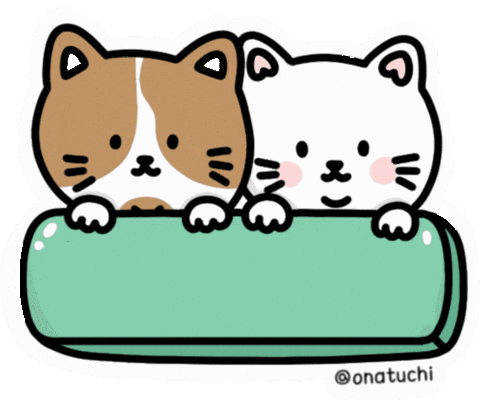- Twice the Impact PM 🔥
- Posts
- 🚲Mastering the Build-Measure-Learn Cycle
🚲Mastering the Build-Measure-Learn Cycle
Learn how BML Cycle helps PMs refine products efficiently

Hey Impactful PM! It’s Aneesha :)
Today, we’re diving into one of the most important frameworks in product management—the Build-Measure-Learn (BML) cycle.
Originating from Lean Startup methodology, this cycle is essential for aspiring Product Managers to grasp because it focuses on iterative development.
The BML cycle allows you to test hypotheses quickly, validate ideas early, and minimize risks while delivering real value to users.
In this post, I’ll walk you through each stage of the cycle and show how it helps Product Managers refine products efficiently. Let’s get started! 🚀
Try the internet’s easiest File API
Tired of spending hours setting up file management systems? Pinata’s File API makes it effortless. With simple integration, you can add file uploads and retrieval to your app in minutes, allowing you to focus on building features instead of wasting time on unnecessary configurations. Our API provides fast, secure, and scalable file management without the hassle of maintaining infrastructure.
Hottest from last week 🔥
Understanding BML Stages: Step by Step 🎯
The Build Stage: Creating the Right Product
Defining the MVP (Minimum Viable Product)
The first step of the BML cycle is building a Minimum Viable Product (MVP). But what exactly is an MVP? It’s the simplest version of your product that still solves a key problem for users. The goal here is not perfection but prioritization—deciding what features are essential for the first iteration. Dropbox, for instance, launched with just a demo video explaining their cloud storage concept, allowing them to validate interest before investing heavily in development.
Balancing Speed and Quality
One of the biggest challenges in this stage is finding the right balance between building quickly and ensuring basic usability. Speed is important to test assumptions, but you can’t sacrifice the core user experience. Over-engineering or feature creep are common pitfalls to avoid. If your MVP gets bogged down by unnecessary features, you’ll miss the opportunity to learn quickly.
Real-World Example: Slack
Slack’s early MVP focused on simple team communication, launching quickly to test user engagement. By honing in on core functionality, they gathered valuable feedback that shaped their rapid growth. Their focus on quick iteration and constant learning made them a standout success.
The Measure Stage: Validating Product Success
Setting Clear Metrics and KPIs
In the measure stage, you need to define metrics that help you determine if your product is succeeding. Whether it’s user engagement, retention, or conversion, clear Key Performance Indicators (KPIs) are critical to track progress. Tools like Google Analytics and Mixpanel are great for measuring how users interact with your product in real-time.
Gathering Quantitative and Qualitative Data
While quantitative data (like page views or click-through rates) tells you what users are doing, qualitative data (such as user feedback or interviews) tells you why they’re doing it. Combining both types of data helps you get a well-rounded view of your product’s strengths and weaknesses.
Example of Effective Measurement: Spotify
Spotify excels at using data to iterate on its products. By closely monitoring user behavior through analytics and regularly conducting user interviews, Spotify fine-tunes its music recommendation algorithms to keep engagement high. This data-driven approach has been key to their success.
The Learn Stage: Applying Feedback for Iteration

JustFreeSlide
Analyzing the Data for Actionable Insights
Once you’ve gathered data, it’s time to analyze and separate actionable insights from the noise. For aspiring PMs, this means looking for patterns that suggest whether you’re solving the right problem. Understanding user pain points is key to making the right improvements.
Pivot vs. Persevere
Sometimes, the data will tell you it’s time to pivot—changing your product direction to better meet user needs. Other times, you’ll find that you need to keep improving the current iteration. Instagram’s famous pivot from a check-in app to a photo-sharing platform is a prime example of making the right call based on user feedback.
Iterating Based on Learnings
Once you’ve gathered insights, the cycle repeats. Your learnings from the current iteration will feed into the next build stage, ensuring continuous improvement. Rapid prototyping and iterating quickly allows you to refine your product without getting stuck in lengthy development cycles.
Common Mistakes in the BML Cycle ⚠
Overcomplicating the MVP
It’s easy to get carried away by adding too many features too soon. The core hypothesis must be tested with the simplest version possible, avoiding unnecessary complexity.
Ignoring Data or Feedback
Never disregard feedback just because it doesn’t fit your assumptions. Confirmation bias can lead you down the wrong path, so taking all insights seriously is crucial.
Not Iterating Fast Enough
In the BML cycle, speed is everything. Slow iterations can delay learning, causing you to miss valuable insights shaping your product.
⭐Key Takeaways for Product Managers ⭐
Define Your MVP: Focus on the core features that solve a specific problem.
Measure Effectively: Set clear KPIs and leverage analytics tools to gather actionable insights.
Gather Feedback: Use both quantitative and qualitative data to understand user needs.
Analyze and Iterate: Separate valuable insights from noise, and continuously refine your product.
Act Quickly: Maintain momentum in your iterations to ensure rapid learning and improvement.
🤣 Product Management Meme of the Day 🤣

ProductHQ
💡 PM Productivity Tip of the Day 💡
Here are a few lines to help you keep going 🎉
Take notes on how your skills and past experiences align with the key PM responsibilities.
That’s all for today !
Stay tuned for some freshly baked PM tips, strategies, insights, weekly Q/A digests, and more right into your inbox!🚀
Cya!
Aneesha ❤️
Connect with us on LinkedIn:

Gif by onatuchi on Giphy



Reply